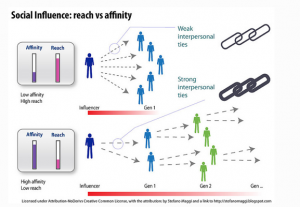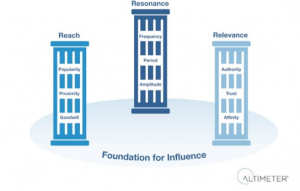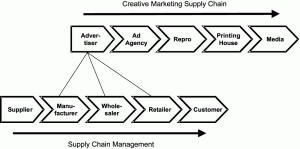
360i has been selected for Ad Age’s A-List, honoring it as one of the best digital marketing agencies
360i is building a Klout-like platform to help brands go viral. It has identified over 10,000 bloggers, journalists, Pinfluencers and Youtube stars who have a large online following, and merged their platforms into a proprietary platform. It aims to utilize its digital map of influencers to involve their client’s brands in the conversation. The technology allows “influence monitors” to identify people with unique expertise and strong digital networks. 360i then pitches these influencers on covering one of its brands or marketing on its brands’ behalf. This allows for a more authentic and engaging brand personality.

Using Klout score to determine strength of influence is contextual, and depends on many factors (http://www.jigsawllc.com/2010/10/07/klout-score-not-enough-for-marketing-campaigns/)
By focusing on intended audiences and desired results through influencer campaigns, 360i can better determine social influence and reflect on its action and outcomes to better understand cause and effect. Influencers can form strong connections with like-minded individuals within social communities, adding value and spearheading engagement.

Altimeter Framework for influence is built upon the 3 pillars to highlight the role they play in causing change or effect
360i managed to overcome the problem that many companies have : looking at influence backwards, relying on Klout scores instead of understanding how influence is actually created and used. It considered what the brand ambassadors’ level of influence means to goals and objectives, applying it to effective strategies and supportive metrics. Furthermore, it lessens time taken to track social engagement and awareness, to allow opportunities for the influencers to execute their campaigns. Despite the clever technology and use of a viral campaign, 360i must be careful to not make marketing and engagement decisions solely based on the score, as this does not take into account the role of influencers.
Ultimately, the true measure of influence is gauged by the outcome or extent of change, determined by the effect 360i wants to achieve.
Some of my personal suggestions for this technology to be really effective are:
- Develop a list of pros and cons for each potential influencer based on their social media activity. They should have reach, resonance and relevance, and appeal to customers.
- Continuously experiment to devise viral marketing campaigns to engage customers
- Besides relying on influencers, creative branding is essential to extending existing awareness. Brand personality should be conversational through influencers who are engaging. Influencers should initiate conversations and respond to existing ones, creating a community. Conversations should focus on people, listen closely to them and respond directly to their needs.
- It should be convenient for influencers to share information, and they should be awarded. For instance, bloggers can be featured in events, advertising campaigns, and offered incentives that align their interests with that of the brand.
- Specific campaign goals must be developed, so that specific hypotheses can be tested out.
- To facilitate viral marketing, influencers should give users the chance to produce user generated content, which strengthens communities. As there is constant 2-way interaction, content will be spread exponentially.
Below is an interesting video that sums up what it takes to extend our level of influence:

Credits:
http://adage.com/article/digital/360i-building-a-klout-platform-brands-viral/240793/














